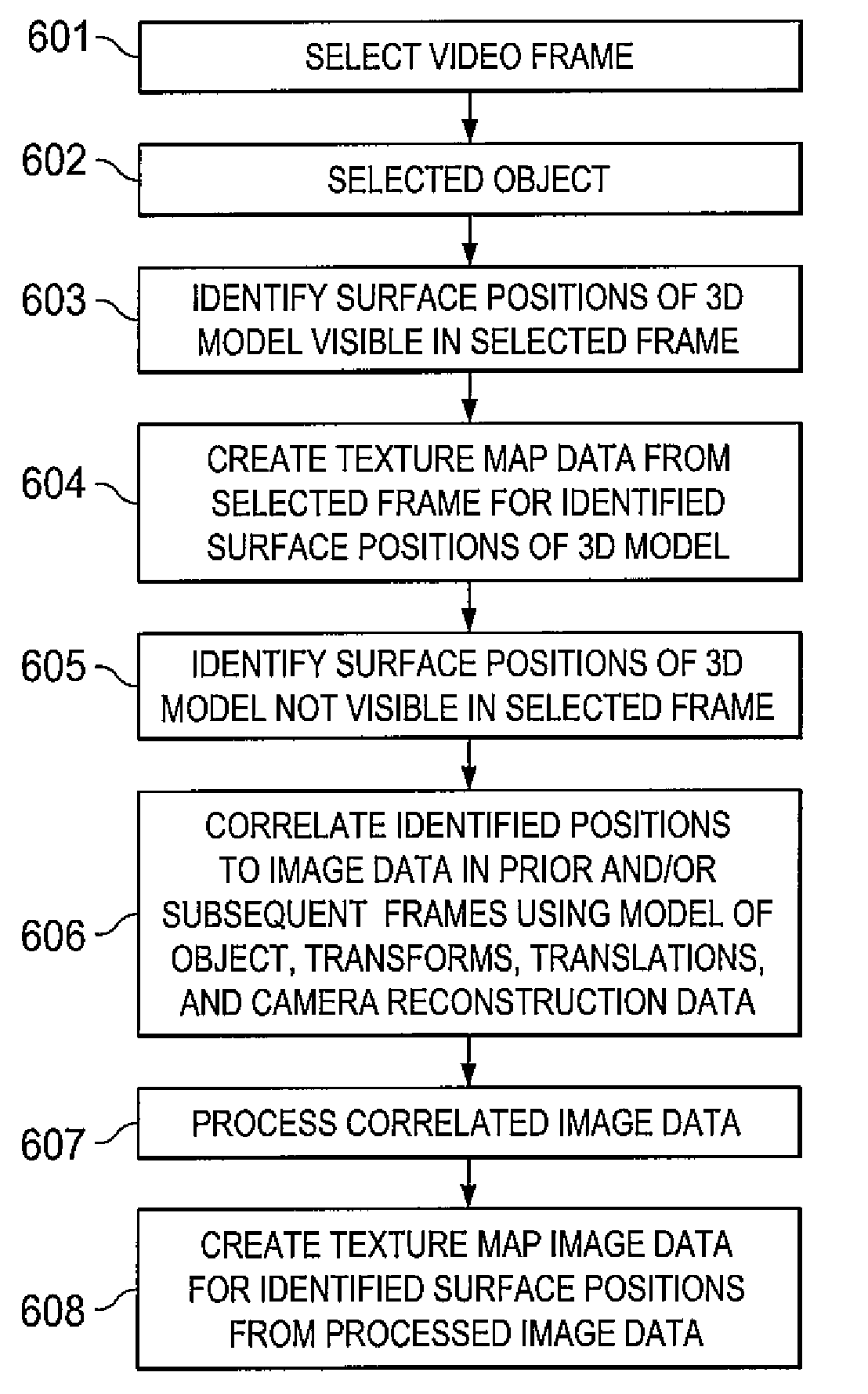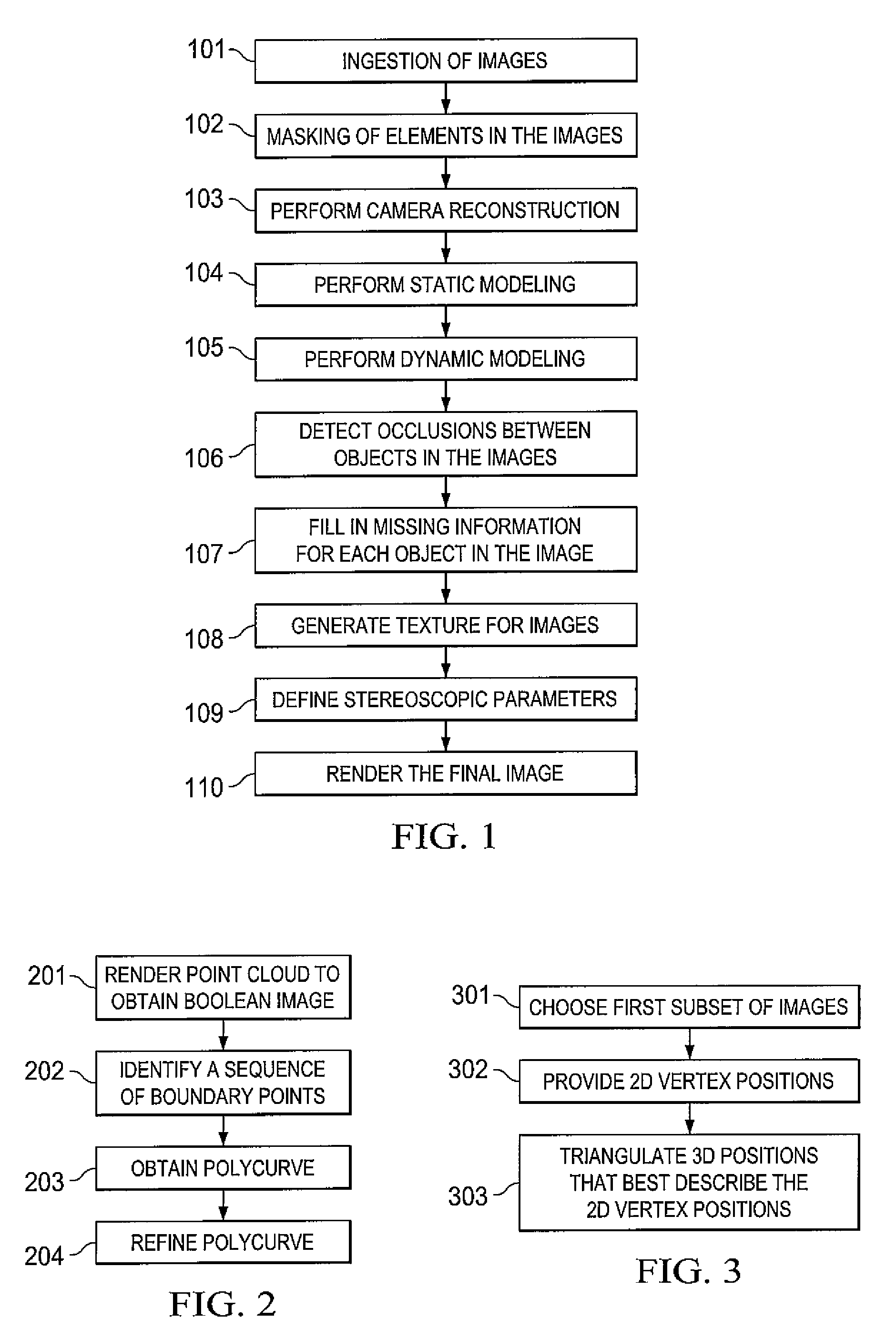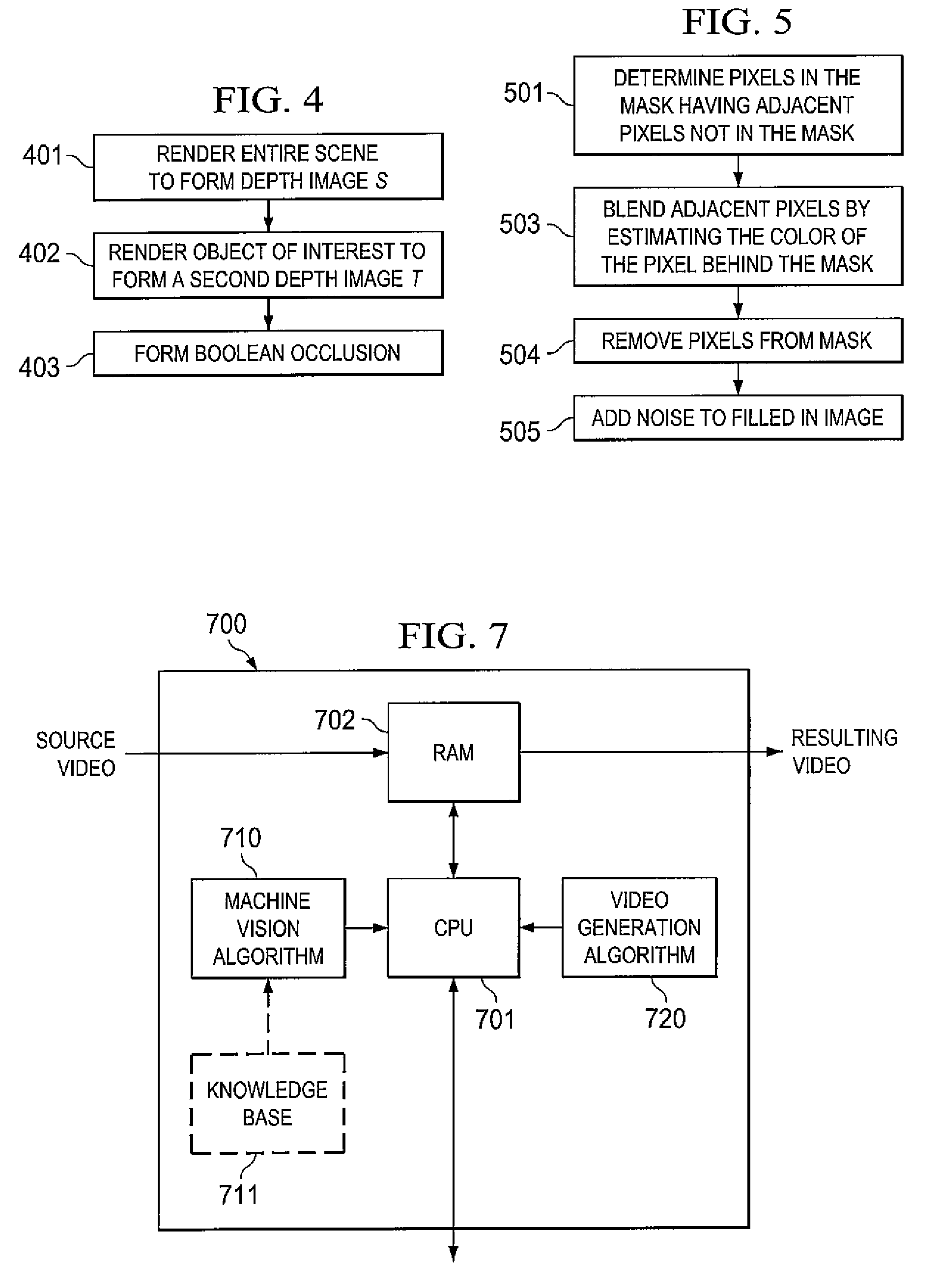Systems and methods for 2-d to 3-d conversion using depth access segments to define an object
a technology of depth access and object, applied in image data processing, instruments, special data processing applications, etc., can solve the problems of distortion complex structure of the object being stretched, and the need to reconstruct the 2-d image and video with 3-d information, etc., to achieve the effect of increasing the weight valu
- Summary
- Abstract
- Description
- Claims
- Application Information
AI Technical Summary
Benefits of technology
Problems solved by technology
Method used
Image
Examples
Embodiment Construction
[0027]The process of converting a two dimensional (2-D) image to a three dimensional (3-D) image according to one embodiment of the invention can be broken down into several general steps. FIG. 1 is a flow diagram illustrating an example process of conversion at a general level. It should be noted that FIG. 1 presents a simplified approach to the process of conversions those skilled in the art will recognize that the steps illustrated can be modified in order such that steps can be performed concurrently. Additionally in some embodiments the order of steps is dependent upon each image. For example the step of masking can be performed, in some embodiments, up to the point that occlusion detection occurs. Furthermore, different embodiments may not perform every process shown in FIG. 1.
[0028]Additional description of some aspects of the processes discussed below can be found in, U.S. Pat. No. 6,456,745, issued Sep. 24, 2002, entitled METHOD AND APPARATUS FOR RE-SIZING AND ZOOMING IMAGE...
PUM
 Login to View More
Login to View More Abstract
Description
Claims
Application Information
 Login to View More
Login to View More - R&D
- Intellectual Property
- Life Sciences
- Materials
- Tech Scout
- Unparalleled Data Quality
- Higher Quality Content
- 60% Fewer Hallucinations
Browse by: Latest US Patents, China's latest patents, Technical Efficacy Thesaurus, Application Domain, Technology Topic, Popular Technical Reports.
© 2025 PatSnap. All rights reserved.Legal|Privacy policy|Modern Slavery Act Transparency Statement|Sitemap|About US| Contact US: help@patsnap.com



